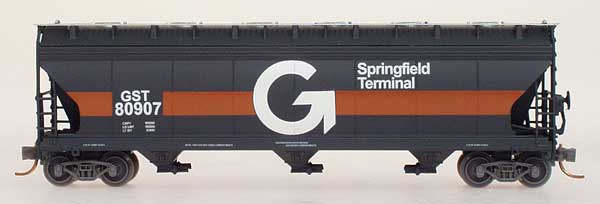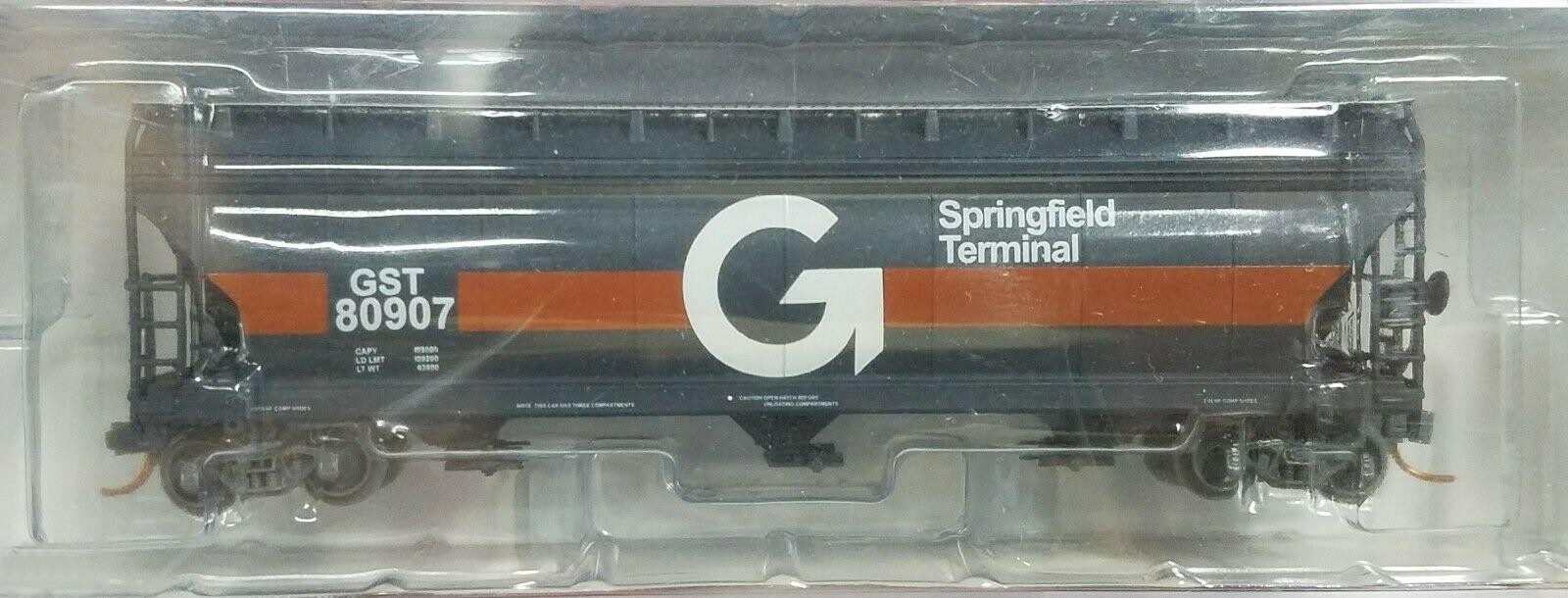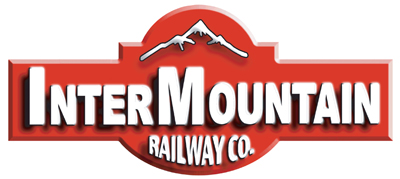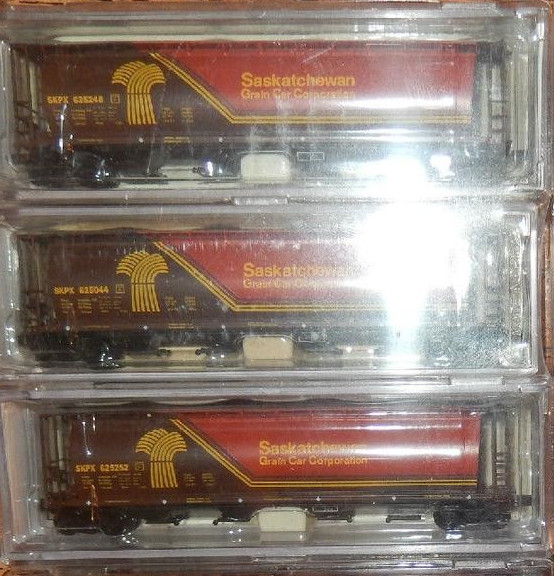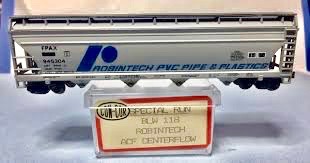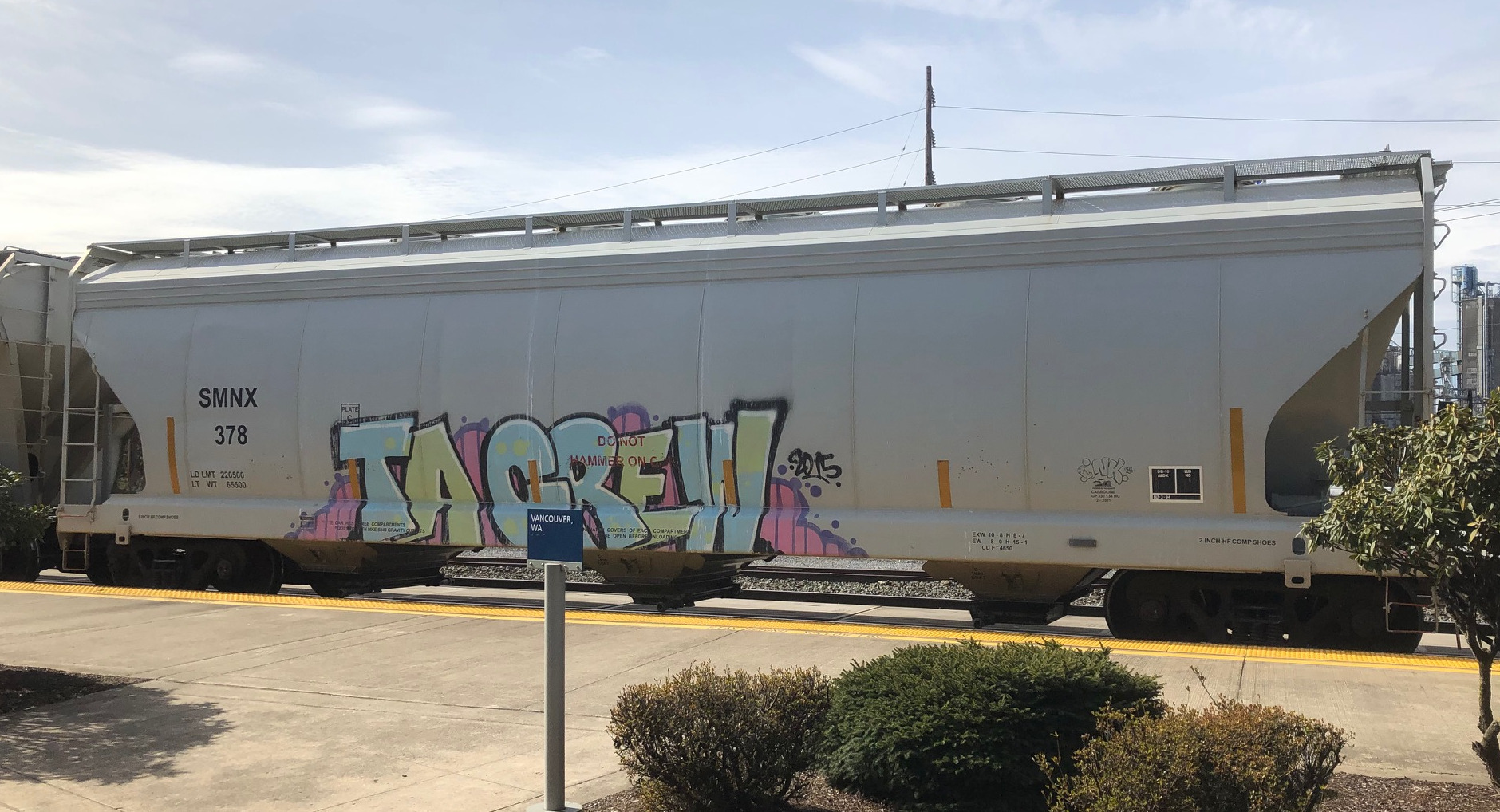Specific Item Information: Only 150 made
Series Information: "The Way They Should Be Now" is a series of special runs from the NSC (then NSE). The cars in this series are fantasy models of modern cars in historical paint schemes of still operating companies. Road numbers are fictitious as well.
Model Information: This model from InterMountain features Micro-Trains trucks with truck-mounted MTL couplers. Etched metal walkways, sharp printing, and excellent detail including seprately applied hoses on the underframe as well as separately applued roof hatches. Unlike the similar Micro-Trains model, the roof hatches do not open. The InterMountain model has superior detail under the bays, though the MTL model is still quite good. Both have the bay releases as separately applied (as opposed to molded) detail parts. The end detail on the IM model also is superior showing hoses from the barrel (to the brake system?).
Prototype History: Production of the 4650-cubic foot 3-bay cars began in 1964. ACF built 2504 examples at Huntington, WV, between 1964 and 1972. The ACF 4650 c.f. 3-bay hopper was the same height and width as the 5250 c.f. 4-bay car but several feet shorter in length (and only had 3 bays!). Some railroads that were not concerned about having the larger plate C clearance 4650cf cars (which could not be used on all branchlines or at all loading facilities) opted for large fleets of 4650cf cars instead of 4600cf. UP and SP were two such railroads (all of the current UP 4600cf cars came from either MP or C&NW heritage).
Hatches: 6 30", 6 20", 3 pressed steel elongated (SP, SSW, 3 piece pressed steel continuous or 4 piece FRP continuous. Outlets: Several types of bolted or welded on outlets are used. Uses: Grain, soda ash, platic pellets. Trucks: 77 ton friction or roller bearing. 86 had 100 ton roller bearing.
Hatches: 6 30", 6 20", 3 pressed steel elongated (SP, SSW, 3 piece pressed steel continuous or 4 piece FRP continuous. Outlets: Several types of bolted or welded on outlets are used. Uses: Grain, soda ash, platic pellets. Trucks: 77 ton friction or roller bearing. 86 had 100 ton roller bearing.
Road Name History: 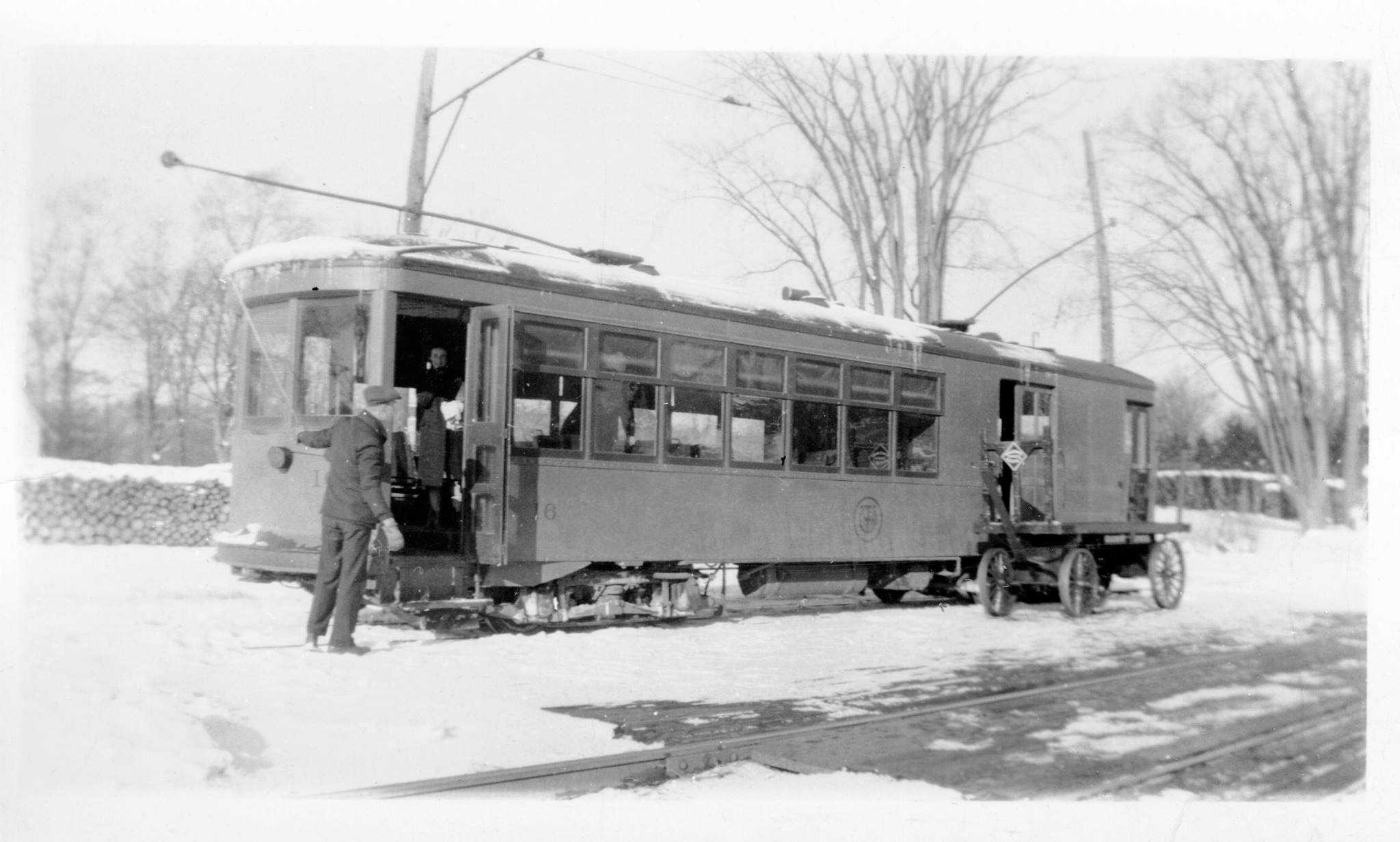 The ST began in 1923 from the reorganization of the Springfield Electric Railway, a sleepy interurban line from Charlestown, New Hampshire across the Connecticut River to Springfield, Vermont, a total distance of just 5 and a half miles. The line had been under control of their only connection, Boston & Maine for most of its existence. Passenger service ended in 1947 but freight service soldiered on under the trolley wire until 1956 when the line was dieselized with a single used GE 44-tonner.
The ST began in 1923 from the reorganization of the Springfield Electric Railway, a sleepy interurban line from Charlestown, New Hampshire across the Connecticut River to Springfield, Vermont, a total distance of just 5 and a half miles. The line had been under control of their only connection, Boston & Maine for most of its existence. Passenger service ended in 1947 but freight service soldiered on under the trolley wire until 1956 when the line was dieselized with a single used GE 44-tonner.
In the 1980’s, everything changed for the tiny ST. The United Transportation Union had made a deal with the ST to be the sole representative of ST employees in exchange for more flexible work rules. This saved the original 5 mile line from certain abandonment. Then a few other lines operated by Maine Central and Boston & Maine that were slated for abandonment were instead transferred to the ST whose flexible work rules saved service to these routes as well. Trains were run with a single GP7 and a small fleet of Trackmobiles.
By this period, Springfield Terminal, Maine Central, Boston & Maine, and Delaware & Hudson were owned by Timothy Mellon’s Guilford Transportation. Mellon came from money (his family founded the Mellon Bank and was instrumental in putting together Alcoa and Gulf Oil) and seemed to operate under the belief that anything worth doing was worth over-doing. In 1985, the struggling Maine Central laid off 30 shop workers with no severance package. There was a strike and MEC and Guilford management were pressed into train service. Accidents soared and the strike spread to other lines (legal under the Railway Labor Act.) Congress stopped the strike and forced MEC to give in to labor demands. Mellon was furious and retaliated by leasing the Maine Central and Boston & Maine to the tiny Springfield Terminal. This put everyone under ST’s flexible work rules. Guilford management bragged that it now took just 8 crew members to get a freight train from Portland, Maine to Buffalo, New York, a job that used to take 38 crew members! A court injunction stopped Guilford’s lease of the D&H so Guilford dropped the D&H into bankruptcy instead. They assumed they could get it back when the bankruptcy was resolved but Delaware Otsego (an area shortline group) and Canadian Pacific bid against Guilford and CPR won, stripping the D&H from Guilford. The Springfield Terminal continued to run the MEC and B&M.
Mellon’s harsh treatment of the local unions is a bit ironic even though he’s the grandson of some of the original robber barons. During his years at Yale, Timothy Mellon was a flag burning leftist who famously gave money to the North Vietnamese! His second business was half ownership of a tie treatment plant where he could be found in a T-Shirt and jeans dragging pallets of lumber around and loading trucks. He even drove an old VW Beetle to work. By the late 80’s, he was one of the most hated men in New England.
In 1998, Guilford bought the Pan Am name and Pan Am Railways subsequently became the official trade name for the railroad. The Springfield Terminal became a paper railroad in most respects although it is officially still the lessor of the Maine Central and Boston & Maine.

In the 1980’s, everything changed for the tiny ST. The United Transportation Union had made a deal with the ST to be the sole representative of ST employees in exchange for more flexible work rules. This saved the original 5 mile line from certain abandonment. Then a few other lines operated by Maine Central and Boston & Maine that were slated for abandonment were instead transferred to the ST whose flexible work rules saved service to these routes as well. Trains were run with a single GP7 and a small fleet of Trackmobiles.
By this period, Springfield Terminal, Maine Central, Boston & Maine, and Delaware & Hudson were owned by Timothy Mellon’s Guilford Transportation. Mellon came from money (his family founded the Mellon Bank and was instrumental in putting together Alcoa and Gulf Oil) and seemed to operate under the belief that anything worth doing was worth over-doing. In 1985, the struggling Maine Central laid off 30 shop workers with no severance package. There was a strike and MEC and Guilford management were pressed into train service. Accidents soared and the strike spread to other lines (legal under the Railway Labor Act.) Congress stopped the strike and forced MEC to give in to labor demands. Mellon was furious and retaliated by leasing the Maine Central and Boston & Maine to the tiny Springfield Terminal. This put everyone under ST’s flexible work rules. Guilford management bragged that it now took just 8 crew members to get a freight train from Portland, Maine to Buffalo, New York, a job that used to take 38 crew members! A court injunction stopped Guilford’s lease of the D&H so Guilford dropped the D&H into bankruptcy instead. They assumed they could get it back when the bankruptcy was resolved but Delaware Otsego (an area shortline group) and Canadian Pacific bid against Guilford and CPR won, stripping the D&H from Guilford. The Springfield Terminal continued to run the MEC and B&M.
Mellon’s harsh treatment of the local unions is a bit ironic even though he’s the grandson of some of the original robber barons. During his years at Yale, Timothy Mellon was a flag burning leftist who famously gave money to the North Vietnamese! His second business was half ownership of a tie treatment plant where he could be found in a T-Shirt and jeans dragging pallets of lumber around and loading trucks. He even drove an old VW Beetle to work. By the late 80’s, he was one of the most hated men in New England.
In 1998, Guilford bought the Pan Am name and Pan Am Railways subsequently became the official trade name for the railroad. The Springfield Terminal became a paper railroad in most respects although it is officially still the lessor of the Maine Central and Boston & Maine.
Brand/Importer Information: InterMountain was founded in 1985 by Fred Brummet. They got started in the model railroad business by producing O-Scale model kits. They got started in the N Scale business almost a decade later when in 1994 they introduced the 40-23 reefer car in kit form. Later, in 1998, they started producing RTR (Ready-to-Run) models. By the early 2000s, InterMountain phased out kit production in favor of the RTR models.
The InterMountain Railway company is located at 1224 Boston Ave in Longmont, CO. They are a manufacturer of HO, N and Z scale model trains. They have produced kits as well as RTR (Ready-To-Run) models. Their N Scale products include locomotives as well as rolling stock. Their rolling stock lineup includes Boxcars, Hoppers, Tank Cars, Reefers, Gondolas, Stock Cars and Flatcars.
Their locomotive releases have primarily been diesel units, with the one major exception being their series of AC-12 Cab Forward steam locos. Their diesel lineup includes F3's, F7's, F9's, SD40's, SD45's and FT units. They are known for quality and detail. They also release their rolling stock in larger varieties of road numbers than most of the other manufacturers.
The InterMountain Railway company is located at 1224 Boston Ave in Longmont, CO. They are a manufacturer of HO, N and Z scale model trains. They have produced kits as well as RTR (Ready-To-Run) models. Their N Scale products include locomotives as well as rolling stock. Their rolling stock lineup includes Boxcars, Hoppers, Tank Cars, Reefers, Gondolas, Stock Cars and Flatcars.
Their locomotive releases have primarily been diesel units, with the one major exception being their series of AC-12 Cab Forward steam locos. Their diesel lineup includes F3's, F7's, F9's, SD40's, SD45's and FT units. They are known for quality and detail. They also release their rolling stock in larger varieties of road numbers than most of the other manufacturers.
Commissioner Information: 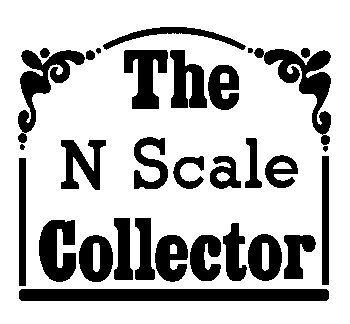 The N Scale Enthusiast Society (previously known as The N Scale Collector until 2011) was established by Wick Brandon, as a sole proprietorship and was a stand alone company until Wick passed away in 2000. The company has been owned by Micro Trains Line since then.
The N Scale Enthusiast Society (previously known as The N Scale Collector until 2011) was established by Wick Brandon, as a sole proprietorship and was a stand alone company until Wick passed away in 2000. The company has been owned by Micro Trains Line since then.
Wick was the founder of TexNRails and he established NSE right after he sold the pioneering N Scale retailer to the Herz family, and the store moved to Florida. Wick and Lea moved their family from Texas to Bakersfield California, and the entire operation was run from his home in Bakersfield. George Johnsen, the current Chairman, came on board as Associate Editor starting with the third issue of the magazine, and the growth of the organization hasn’t stopped. Wick and George did the first convention in Medford in 1993, and added staff and advisors as the organization grew. Wick held the first auction for the NSE in 1995.
The NSE mission statement reads: “This organization is dedicated to the preservation of the history of N Scale Model Railroading, and the railroads they represent.”
They do:
- Special Run Cars
- Regular Auctions of "collectable" Cars
- Annual Conventions
- Bi-Monthly Magazine
Wick was the founder of TexNRails and he established NSE right after he sold the pioneering N Scale retailer to the Herz family, and the store moved to Florida. Wick and Lea moved their family from Texas to Bakersfield California, and the entire operation was run from his home in Bakersfield. George Johnsen, the current Chairman, came on board as Associate Editor starting with the third issue of the magazine, and the growth of the organization hasn’t stopped. Wick and George did the first convention in Medford in 1993, and added staff and advisors as the organization grew. Wick held the first auction for the NSE in 1995.
The NSE mission statement reads: “This organization is dedicated to the preservation of the history of N Scale Model Railroading, and the railroads they represent.”
They do:
- Special Run Cars
- Regular Auctions of "collectable" Cars
- Annual Conventions
- Bi-Monthly Magazine
Item created by: Alain LM on 2020-07-29 17:14:08. Last edited by Alain LM on 2021-06-20 04:36:38
If you see errors or missing data in this entry, please feel free to log in and edit it. Anyone with a Gmail account can log in instantly.
If you see errors or missing data in this entry, please feel free to log in and edit it. Anyone with a Gmail account can log in instantly.


